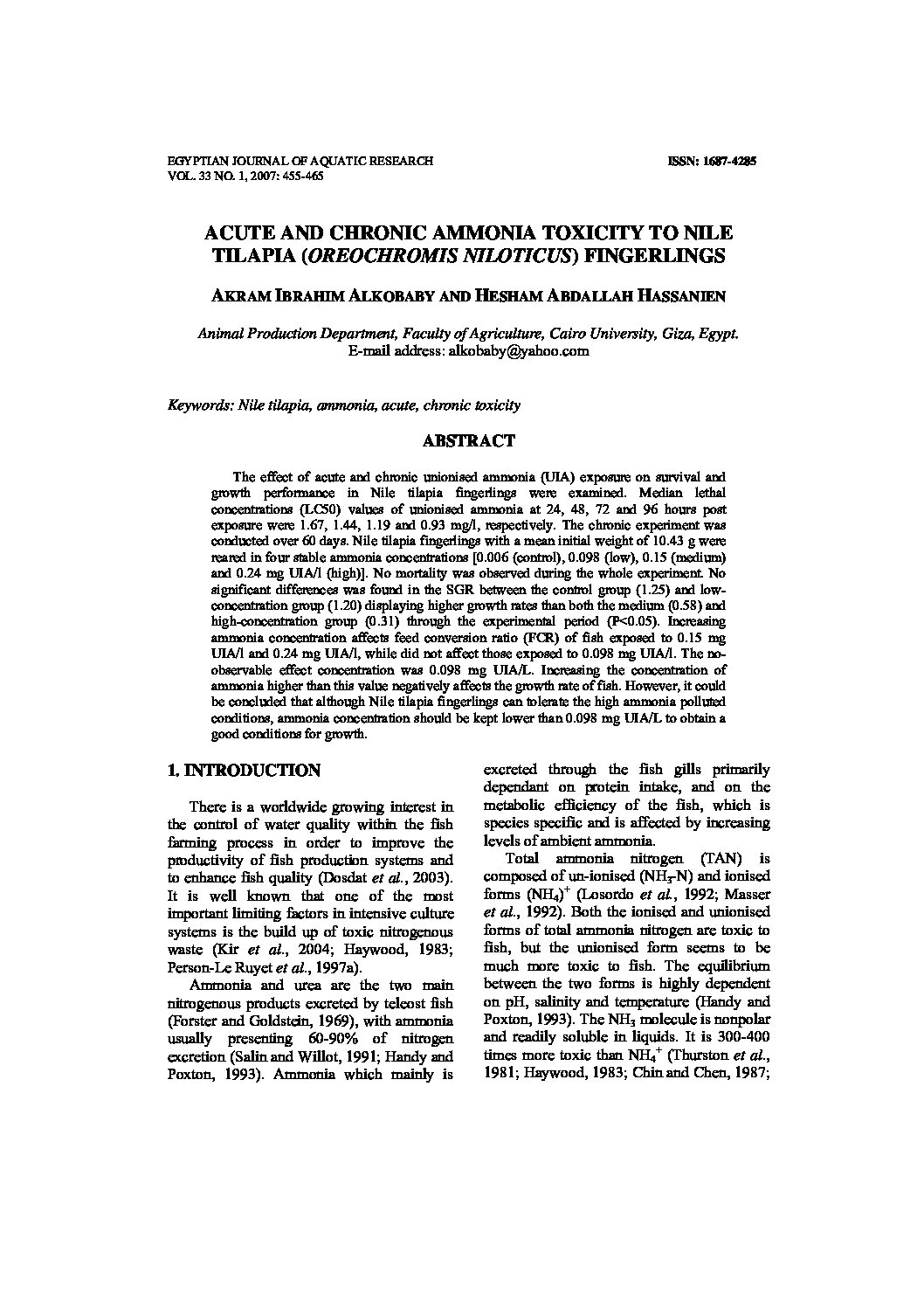Categories
vol-33CELL CULTURE FROM TWO RED SEA BENTHIC
INVERTEBRATES: A CASE STUDY ON THE SOFT
OCTOCORALS DENDRONEPHTHYA KLUNZINGERI AND
ANTHELIA GLAUCA
MOHAMED S. A. AMMAR1
, AHMED M. EMARA2
, SANJA PEROVIC3
, MATTHIAS
WIENS4
, ZOE BILLINGHURST5 , ISABEL M. MULLER6
AND WERNER
E.G.MULLER7
.
1,2 National Institute of Oceanograhy and Fisheries, Red Sea and Suez & Aqaba Gulfs Branch,
Egypt.
3,4,6,7 Institut fur Physiologische Chemie, Abeteilung Angewandte Molekularbiologie,
Universitat, Deusbergweg 6, D-55099Mainz: Germany.
5 Plymouth Environmental Research Center, University of Plymouth, Plymouth, Devon PL4
8AA; United Kingdom.
Keywords: Dendronephthya klunzingeri, Anthelia glauca, Octocoral; Cell cultures; heat-shock
protein; histone H4; UVS-related protein; biomarker.
ABSTRACT
Primmorphs were obtained from single cells of both coral species Dendronephthya
klunzingeri and Anthelia glauca following incubation for three or four days during 2001.
Both ultraviolet light (UVB; peak of emission of 320 nm) and visible light (wavelength
between 400 and 520 nm with a maximum at 480 nm) were applied to the primmorphs as
stressors. The following incubation probes have been isolated from D. klunzingeri and were
used to monitor the expression of the respective genes in the homologous cell system; the
heat-shock protein HSP90 (to monitor general stress responses), the histone H4cDNA (to
monitor the cell cycle/proliferation) and the UVS-related protein (response to ultraviolet
light) from D. klunzingeri. The data show that the steady state level of HSP90 expression is
only upregulated at low level of exposure to UVB (30 J/cm2
), while at stronger irradiation
the expression level decreases. The expression of the histone H4 gene is blocked following
exposure to UVS. Interestingly, in the absence of UVB no transcripts of UVS-related
protein can be visualized. However, after exposure of the primmorphs with 30 to 300 J/cm2
a strong upregulation of the expression of the UVS-related gene is seen. The response of
the primmorphs to visible light is distinct to that following exposure to UVB. The
expression of the gene for histone H4 is significantly upregulated following exposure to
UVB, while no expression of the gene UVS-related protein can be detected. It is concluded
that, the primmorph system is useful to assess potential nature and anthropogenic
disturbances on coral cells.







